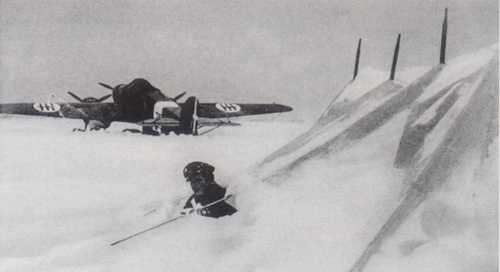
Italian Forces
A rough network of airfields
Stato Maggiore Aeronautica
When, April 1939, the Italy occupied the Albania, the aeronautical infrastructure’s situation of this Balkan country were very rough and the Italians done many efforts for a minimum of adjustment. Moreover the Italy’s will of no worsen the rapports with the Greece and Yugoslavia (the war is still late) delayed the works. Result: when the Mussolini’s decision of the attack against the Greece began to take form, the Albanian airport infrastructures were still far away from the optimum. On half October 1940 (the war against the Greece began on 28 October 1940), the situation of Albanian airfields dispatched to Italian Air Force were the following: Tirana: airfield’s dimensions 1,700x800 metres, landing runway in advanced state of construction, airfield buildings just begun, barracks for personnel’s accommodation and storehouses in assembly’s state, field equipment for night flights. Valona (in Albanian Vlora or Vlorë): airfield’s dimensions 1,100x900 metres, landing runway in advanced state of construction, airfield buildings just begun, field equipment for night flights. Durazzo (in Albanian Durrës): airfield’s dimensions 1,300x600 metres, air terminal existing, no possibilities of accommodation and recovery. Argirocastro (in Albanian Gjirokastër and in Greek Αργυρόκαστρο/Argyrocastro): airfield’s dimensions 1,300x800 metres, air terminal existing, no possibilities of accommodation and recovery. Coritza: airfield’s dimensions 1,000x700 metres, air terminal existing, good possibilities of accommodation and recovery. Berat: airfield’s dimensions 1,000x550 metres, air terminal existing, barracks for personnel’s accommodation and storehouses in assembly’s state. Shjak: began airfield and runway’s construction. Scutari (in Albanian Shkodra or Shkodër): airfield’s dimensions 1,250x950 metres, air terminal existing, no possibilities of accommodation and recovery. Devoli: airfield and runway in arrangement’s state, no possibilities of accommodation and recovery. Drenova: airfield and runway in construction’s state, no possibilities of accommodation and recovery. Argirocastro Bis, Delvina and Pogradec: construction of landing strips for the Italian Army’s requirements. Furthermore were existing two other strip, Kukes and Pescopeja, but not usable for military duties because in high mountains and very little. In the week following the war’s start many works was completed, but the situation were still very difficult and aggravated by the beginning of the heavy rains and, afterwards, of the snow. In brief, many airfields, all with non-prepared runways, became impracticable for days and days, while the lack of proper accommodation made even more difficult the life’s condition of the men. This situation remained unchanged for the entire duration of the war in the Balkans and this photo, S.79 of 46th Stormo, 104th Gruppo, Tirana airfield, Winter 1940-1941, is very emblematic. Victor Sierra
2441 Views
1/14/2013
